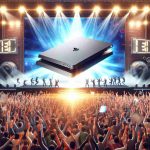- Nvidia dominates the data center computing market, driven by large investments in AI infrastructure.
- Nvidia GPUs and CUDA software are critical in AI operations, offering superior performance and efficiency.
- AMD’s ROCm faces challenges, with industry resistance to switching from Nvidia’s established ecosystem.
- Nvidia’s Q3 FY 2025 data center revenue reached $30.8 billion, a 112% increase year-over-year, while AMD achieved $3.5 billion with a 122% growth.
- Nvidia’s projected revenue growth is 52%, surpassing AMD’s 24%, justifying the stock market’s preference for Nvidia.
- For investors aiming for top AI stocks in 2025, Nvidia remains the preferred choice, maintaining a significant lead over AMD.
Nvidia stands as an undeniable titan in the high-stakes realm of data center computing, a field fueled by a deluge of investment in artificial intelligence (AI) infrastructure. Like a skilled chess player several moves ahead of its rival, Nvidia has carved out a commanding lead over its competitor, AMD.
Picture vast data centers humming with rows of servers, their lifeblood powered by Nvidia’s GPUs and proprietary software, CUDA. This combination performs the heavy lifting of AI computations, seamlessly handling vast swaths of data with unparalleled efficiency. In contrast, AMD’s ROCm, a capable alternative on paper, faces a steep climb. The industry has already entrenched itself in Nvidia’s ecosystem, rendering the prospect of switching both costly and daunting.
Financial figures tell a tale of dominance. In Q3 FY 2025, Nvidia’s data center revenue soared to $30.8 billion, surging 112% from the previous year. In contrast, AMD’s revenue, though boasting a respectable growth of 122% year-over-year, reached only $3.5 billion. Nvidia’s presence casts a long, formidable shadow over its rival.
While there’s a glimmer of hope for AMD, evident in its lower forward P/E ratio, the price gap is justified. Nvidia’s expected revenue growth of 52% outpaces AMD’s projected 24%, underscoring why the market favors Nvidia’s stock.
For investors seeking the best AI stock for 2025, the choice is clear. Though AMD continues to make strides, approaching Nvidia’s colossal lead seems a distant dream. In the world of AI computing, Nvidia holds the crown, and its reign looks unchallenged.
Why Nvidia Reigns Supreme in the AI Data Center Arena: Key Insights and Future Trends
Features, Specs & Pricing
Nvidia’s dominance in AI and data center solutions is largely due to its advanced GPU architecture. Key models such as the A100 and the newer H100 GPUs offer unmatched performance for AI workloads. The A100, based on the Ampere architecture, introduced features like multi-instance GPU (MIG), which allows a single GPU to be partitioned for different tasks. The H100, with its Hopper architecture, improves on this with increased memory bandwidth and processing capabilities optimized for highly parallel AI computations.
Pricing Overview:
– Nvidia A100: Prices range from $11,000 to $20,000 depending on configuration.
– Nvidia H100: The latest prices can reach up to $35,000 due to the cutting-edge tech and demand.
In comparison, AMD’s offerings in the data center market, such as the MI200 series, can be more budget-friendly but lack the widespread adoption of Nvidia GPUs.
Real-World Use Cases
Nvidia’s GPUs are utilized in various domains beyond AI data centers, including:
– Autonomous Vehicles: Companies like Tesla leverage Nvidia’s hardware for real-time data processing and decision-making.
– Healthcare: Nvidia GPUs enable accelerated drug discovery and genomic studies.
– Gaming and Virtual Reality: With ray tracing capabilities, Nvidia GPUs power realistic graphics.
– Cloud-Based Services: Major cloud providers like AWS, Google Cloud, and Microsoft Azure offer Nvidia GPU instances due to their efficiency in high-performance computing tasks.
Market Forecasts & Industry Trends
The demand for AI-driven data center solutions is expected to continue growing, with Nvidia positioned to benefit significantly. According to IDC, global AI spending is forecast to surpass $300 billion by 2026, with substantial investment in AI infrastructure.
Nvidia’s strategic partnership with ARM is poised to expand its reach into mobile and edge computing, potentially enhancing its data center portfolio. Additionally, the increasing shift towards AI-as-a-Service accelerates the adoption of Nvidia technologies in new markets.
Controversies & Limitations
Despite its technological lead, Nvidia is not without challenges. The high cost of Nvidia’s GPUs limits accessibility for smaller enterprises. Additionally, there are concerns regarding software vendor lock-in due to Nvidia’s proprietary CUDA platform, which presents hurdles for organizations seeking platform flexibility.
Moreover, ongoing supply chain disruptions and geopolitical tensions pose potential risks to Nvidia’s hardware availability and pricing stability.
Pros & Cons Overview
Pros:
– Leading edge AI performance.
– Strong ecosystem support with CUDA.
– Significant investments in new technologies (e.g., AI inference, ARM developments).
Cons:
– High cost deters smaller customers.
– Proprietary software could limit flexibility.
– Supply chain vulnerabilities.
Security & Sustainability
Nvidia prioritizes security with features like secure boot processes and firmware updates. Its commitment to sustainability is reflected in initiatives to reduce carbon emissions within data centers and produce energy-efficient designs.
Quick Tips for Investors and IT Decision-Makers:
– Stay Updated on Product Releases: Monitor Nvidia’s latest technology launches to capitalize on investment opportunities.
– Evaluate Alternatives: Consider your organization’s specific needs, potentially leveraging AMD for cost-effective solutions if budget is a constraint.
– Assess the Total Cost of Ownership (TCO): Consider not just GPU prices, but also software, support, and infrastructure changes when deciding between Nvidia and alternatives.
These considerations can help guide strategic planning, whether you’re upgrading a data center or building an AI-enhanced application.
For more on Nvidia’s product offerings and corporate news, visit the official Nvidia website.




















